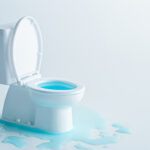What’s the one thing that your morning shower, a big bowl of pasta, and a hot cup of tea have in common? You guessed it – they all require water. Otherwise, you’re just standing in your shower stall, eating dry penne, and holding an empty mug (perhaps not all at the same time). The point is, we depend on water from sun-up to sun-down, and at all times in between. More than that, we expect it to be at the ready, safe, clean, and refreshing at the turn of a tap.
But what happens when the water pouring from the tap doesn’t look or smell so great? Read on to learn about some of the most common water quality problems, their causes, and how to solve them.

Sediment
Over time, sediment can build up in a tank-style water heater and not only lead to internal corrosion if untreated but affect the quality of your water. Sediment can include sand, clay, dirt, rust, scale, and a variety of organic materials that become suspended in water and cause it to have a cloudy or opaque appearance. Have the water tank flushed routinely to prevent build-up. You can also purchase sediment filters at your local home improvement store for even more protection.
Hard Water
Excess calcium and magnesium can lead to what is commonly referred to as “hard water”. Some of the tell-tale signs include little to no lather from soap and detergent, clothes and dishes needing more than one cycle to get clean, and dry, itchy scalp and skin. Hard water can also cause lime scale build-up inside pipes that eventually can result it permanent damage. With a whole-house water softener, water runs through a sodium-filled appliance, balancing the hardness.
Iron and Manganese
If your water has a cloudy or rusty appearance, a metallic taste, and leaves stains on plumbing fixtures, laundry, and dishes, it’s likely due to an abundance of iron and manganese. Most water softeners can remove up to 5 PPM of ferrous iron, while oxidizing and colloidal iron filters can remove higher amounts.
Lead
It was once common to seal copper plumbing pipes with lead solder. Over time, we learned that the lead would dissolve, releasing dangerous levels into drinking water. But because lead is tasteless, odorless, and colorless when dissolved, it was almost impossible to detect. Luckily, we know better now. But if you live in an older home, have your water tested for lead.
Hydrogen Sulfide
Hydrogen sulfide gives your water a rotten egg smell and can have disastrous effects on metal pipes. To remove hydrogen sulfide, you’ll need a multi-stage filtration system.
Bad Taste, Foul Odor
Water should taste and smell like, well – nothing. But if yours is fishy, musty, or moldy it could be due to organic matter often found in surface water supplies. An activated carbon filter should solve the problem. In severe instances, foul odor and taste can be caused by a sewer or septic leak. If you have one, it’s important to have it periodically inspected and serviced.
At Norhio Plumbing, our water quality specialists can determine whatever might be polluting your water. We also can recommend and install the right water treatment system to help ensure your water quality problems disappear. Contact us today to schedule a free new system proposal following a water quality test.









Leave a Reply